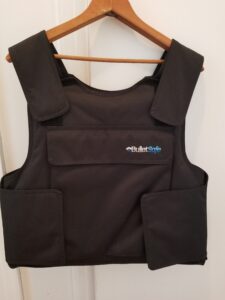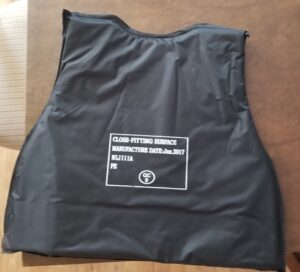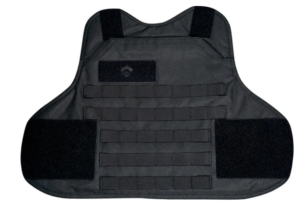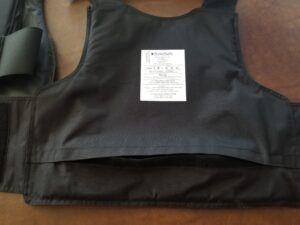Back when the world was expecting a collapse during the transition from 1999 to 2000, an employee of mine did some major preps. One thing he got was a bullet proof vest. Up until then I really did not concern myself with them. My local prep was cover (something that can at least temporarily stop incoming fire).
Fast forward about a decade and I had looked at various bullet proof vests yet still had not bought one. The cost compared to the change of using them left me without any desire to spend the money. About that time, I became the leader of a church security team and also started working on a security detail.
With the swearing in of Barack Hussein Obama as President, tensions in America were high. Concerns of someone killing the President and causing National chaos was on a lot of people’s minds. Personal safety, was on the front of people’s minds. As a result, I began to research in earnest the different types of body armor and what I would likely need based on different scenarios.
There are many levels and types of armor. There are many different official and a few unofficial levels of body armor. The National Institute of Justice (NIJ) is the official certification place for the United States.
Here is a direct link to the NIJ site on body armor: https://nij.ojp.gov/topics/equipment-and-technology/body-armor/performance-standards-and-compliance-testing
For a good read on body armor in general, check out this article: https://www.studentofthegun.com/articles/body-armor-sucks-is-your-life-worth-it/
I will only cover soft armor and what we use for premise / church / executive protection. Soft is more comfortable to wear because it gives and moves with the body. Hard armor is, well, hard and does not move with the body. Soft armor is also easier on the whole to conceal.
For the work I have done, we have used overt (visible) and covert (concealed) soft armor. This gave us the choices of Level IIa, II, IIIa. Anything above that seems to only come in hard plates.
We chose level IIIA based on the fact that most threats will be from handguns and it offers the “best” protection from handguns. This is based on the individual case (why we are protecting the client) and FBI Uniform crime lab statistics (https://ucr.fbi.gov/crime-in-the-u.s/2019/crime-in-the-u.s.-2019/tables/table-20) showing a 22 to 1 ration of handguns to rifles.
For church security, concealment was a priority, we didn’t need to scare the sheep. While only one member of the team was there to protect the pastor, there were many men and women scattered throughout the building staying alert.
When protecting individuals on a detail, sometimes the protectee was short term (a matter of hours) and other times it was days. Depending on the situation, the protectee may have needed armor at other times they did not. If the protectee needed armor, we provided hidden or external armor. In all cases our clients chose external that could be taken off once they where they needed to be.
Think of it this way, if an attorney on a high-profile case needed protection, they got it, however wearing body armor in court would send the wrong message. The same for executives once they were in their building. So quick on and off vests were used. After trying a couple of styles, I settled on using Bullet Safe vest. It is fairly easy to get on and off, and because it is wrap around made the client feel more protected than a plate carrier. It can fit under a sports coat or winter jacket that is one size larger than the client normally wears if it needs to be semi hidden.
We do offer a more concealable armor, however I have yet to have a client take us up on it. This can fit under an everyday shirt and be very inconspicuous. I have worn this myself for different details.
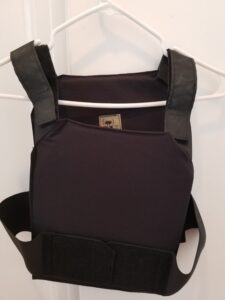
These are easy to conceal, but leave large gaps in coverage and though the armor can be replaced there is not a lot of modularity. They do exactly what they are intended to do, cover the vital organs from the front and back while being hidden.
It is not unusual for a client to want the armor we use and for me to literally sell the system off of my back to them at the end of a contract.
For the last several years we have been using Bullet Safe vests. A nice thing about the Bullet Safe vest is its modularity.
Here is a referral link with our affiliation, https://shareasale.com/r.cfm?b=1861707&u=150867&m=49871&urllink=&afftrack=
I believe there are several advantages to the Bullet Safe vest, especially if you don’t need concealment. They cover more than more concealable plates. By protecting higher and lower as well as the left and right side, I have better piece of mind when wearing or having a client wear the armor. This goes back years to when I was at a LEO training class for prospective SWAT / SRT members. The instructor told the story of how his former chief was killed wearing armor. Apparently when involved in a shooting, he did as we all would. He turned his face and body away while pointing his weapon and firing at the bad guy who was shooting a full auto MAC-10. Since the chief’s side was exposed and the plates only covered his front and back, the bullets went into his ribcage and killed him. That story has stuck with me.
If you want to go from plain vanilla to a “carrier”, you can replace the front with a tactical MOLLE system if you wish. https://shrsl.com/4kov2
Plates can be upgraded / replaced easily though the inside of the vest, just undo the Velcro and swap out to the level and type you want.
This allows an executive protection vest to be upgraded to a patrol vest with level III plates and PALS or even Level IV plates, add in neck and groin protection and you have the ability to go full armored up.
Do you or have you worn body armor for a job or other reasons? Let us know your story and thoughts.
Until we meet again, keep your booger hook off of the bang switch until on target and ready to fire.

